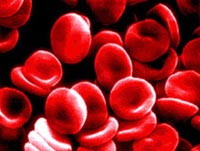Unique study gives surmises about Childhood leukaemia's cause
Professor Tariq Enver, from Medical Research Council Molecular Haematology Unit in Oxford, and Professor Mel Greaves, from Institute of Cancer Research, have made serious steps in the way of diagnosing, treating and avoiding the risk of relapse of the most ruthless disease - childhood leukaemia.

Leukemia or leukaemia is a cancer of the blood or bone marrow and is characterized by an abnormal proliferation (production by multiplication) of blood cells, usually white blood cells (leukocytes).
Leukemia, like other cancers, result from somatic mutations in the DNA which activate oncogenes or deactivate tumor suppressor genes, and disrupt the regulation of cell death, differentiation or division. These mutations may occur spontaneously or as a result of exposure to radiation or carcinogenic substances and are likely to be influenced by genetic factors.
The researchers studied four-year-old twin girls, Olivia and Isabella, with pre-leukaemic stem cells, to date Olivia has developed leukaemia (acute lymphoblastic leukaemia), while her sister has not.
But to have pre-leukaemic stem cells is not enough, another genetic mutation must take place for the cells to cause disease. In Olivia’s case it might have been infection.
Until the cause or causes of leukemia are found, there is no way to prevent the disease. Even when the causes become known, they may prove to be things which are not readily controllable, such as naturally occurring background radiation, and therefore not especially helpful for prevention purposes.
The researchers think that for now the best way of treating the disease and avoiding the relapse is to attack the pre-leukaemic cells in children with leukaemia.
The “twin-study” is really unique as it is still unknown why one child has developed the disease and the other hasn’t.
Subscribe to Pravda.Ru Telegram channel, Facebook, RSS!


